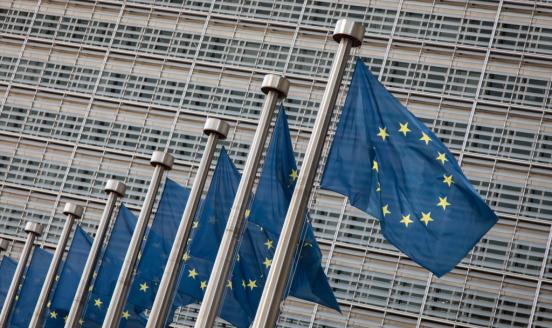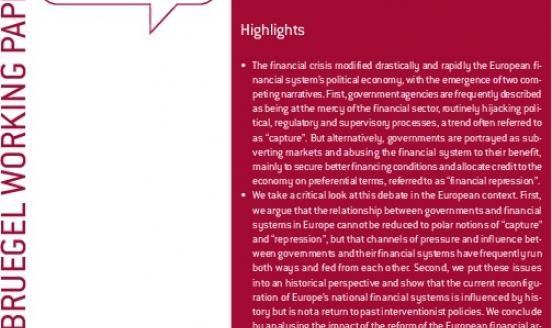The Weekender
Dear All,I’m writing these lines from Paris where the vote on the ESM took place in the parliament and passed with the abstention of most left wing pa
Dear All,
I’m writing these lines from Paris where the vote on the ESM took place in the parliament and passed with the abstention of most left wing parties. Now this will go before the Senate next week where the left has a majority. I have written quite a bit (in French) to advocate in favour of the ESM, here for the Huffington Post and here for Le Monde along Daniel Cohn Bendit and others. I think it will pass in the Senate but the message sent to Germany will be problematic for Hollande if and when he takes office.
I will focus on the following:
1. The nitty gritty of the ESM Treaty
2. Greek Deal
3. Softer Terms for Spain and Portugal
1. The nitty gritty of the ESM Treaty
I realized in France the degree to which the ESM Treaty has been misunderstood by the general public and the extent to which policy conditionality in exchange for financial assistance remains a touchy subject.
My colleague Silvia Merler at Bruegel has done a very detailed comparative analysis of the last version of the ESM Treaty with a previous version. This highlights some very meaningful changes, which can be summarized as follows:
- The link to the fiscal compact didn’t exist in the July version (for the fiscal compact wasn’t even discussed then). This link can be politically problematic (as it is in France for instance).
- The relationship with the IMF has been loosened. The ESM seems to have gained some autonomy from the IMF in the sense that now cooperation should happen “wherever possible” accepting the possibility that it might not be possible in some instances. But the Treaty is still written as though the IMF, the Commission and the ECB will always have a consensual assessment of the situation, which I find somewhat naïve. There will inevitably be conflicts and the ESM Treaty should plan for these and devise an appropriate modus operandi to avoid brinksmanship.
- The possibility to use private sector involvement when the debt dynamic is deemed unsustainable remains but the language has been somewhat toned down and made a bit more vague to reduce anxiety in financial markets. “In accordance with IMF practice, in exceptional cases an adequate and proportionate form of private sector involvement shall be considered in cases where stability support is provided accompanied by conditionality in the form of a macro-economic adjustment programme.”
- The governance has been improved in particular with the addition of an emergency procedure when the Commission and the ECB declare a threat to the stability of EMU in which case, assistance is granted expeditiously unless 15% of the quorum opposes it.
- Collective Action Clauses will be added on all sovereign debt issued in the euro area earlier than initially planned (Jan 2013 instead of July 2013)
- The technical ability of the ESM to lend for the purpose of recapitalizing financial institutions in a member states has been strengthened.
- The list of tools and instruments has been broadened and detailed: ESM Loans, Secondary Market support facility and Primary Market Support facility
- The Treaty will enter into force when 90% of the subscribing members will have ratified it (down from 95% in the July version).
All in all, this treaty could be drafted better in a number of ways and hopefully the March European Council will be used to do that in particular with respect to the potential co-existence of the ESM and the EFSF.
This has been discussed this weekend at the Ministerial G20 in Mexico this weekend where Geithner (speaking on behalf of the G20 at large) pressed Schauble to design a bigger and more robust European firewall as a precondition for a commensurate international effort to increase the funding of the IMF (to which the US will not participate in any case).
Schauble failed to secure a parliamentary backing for it before leaving so he will have to return to the Bundestag in the next couple of weeks and will most likely deliver by the March European Council. This should allow the ESM and the EFSF to run in parallel for some time and should unleash contribution to the IMF by Japan, China and large emerging economies.
Meanwhile, the mood towards Europe in the executive board remains cold and any European program should remain very limited in the short term. The rumour is that the IMF would only provide 13bn in the new 130bn program for Greece.
2. Greek Deal
The terms of the Greek PSI have finally been made public and the exchange offer is launched. I will focus on the Greek Law bonds because I think the international law bonds are relatively unlikely to be tendered.
ECB and NCB holdings have also been settled through a swap with the Greek authorities. The eurosystem’s claims are now new bonds with new ISIN codes that will not be covered by the PSI and/or the activation of CACs.
Regarding the exchange offer itself. There are no major surprises and there are in fact some encouraging features in the deal, in particular, “the exit consent” which basically allows investors to consent to the change in the payment terms along with the exchange to the PSI deal thereby potentially bringing with them the holdouts if CACs are invoked.
The Greek authorities have stressed that the deal would go through if they had more than 90% participation, and that they would keep the option to call off the exchange if the participation is between 75% and 90% and that the deal would be off, if participation falls below 75%.
In addition, CACs have been retrofitted in Greek Law bonds with an aggregation clause that requires a quorum of 2/3 of the entire stock of Greek law bonds and 1/2 of every individual series in order to approve a change in payment terms.
As a result, I believe that the participation rate will be the key variable driving the shape and form of this PSI exercise. My understanding is summarized in the table below:
The participation rate will be driven by two things, prior negotiations and built-in incentives:
- The binding nature of the prior negotiations remains unclear. This is when we will see whether the months of negotiation with the IIF and then the creditors’ committee actually helped to increase the participation rate or whether it was a waste of time.
- The micro-incentives in the exchange are imperfect. Zettelmeyer and Guti recently highlighted a few important features necessary to maximise the participation in a voluntary exchange. They argue that to maximise the participation rate, one needs to design an exchange offer that favours those who participate early as opposed to those who are drawn in the deal by the activation of the CACs. The payment terms should remain equivalent but those who haven’t tendered early should be de facto or de jure subordinated creditors (by keeping Greek law bonds for instance). This feature is not present in the deal and therefore reduces the incentives to participate.
All in all, I think the temptation to free-ride remains fairly high and therefore my personal expectation is for the participation rate to be at best within the 66%-75% band, which leaves some discretion to the Troika and Greece to invoke the CACs or not. But I think they will.
Finally, the issue of blocking stakes remains potentially an important one because, if I understand correctly the wording of the CAC clause, if a particular series doesn’t have a 50% quorum, it could potentially refuse to accept an amendment in the payment terms. I suppose that Hedge Funds have built a substantial position in short dated paper, in particular in the March 12 bond. In fact, BarCap had done a back of the envelope estimates that suggested that the ECB only had a small part of these holdings.
This requires a degree of coordination but hold outs could potentially refuse an amendment of the payment terms on one or several particular series and force the Greek authorities either towards a hard default, or a quite cynical payment in full.
3. Portugal and Spain getting softer targets
Outside of Greece, there are some encouraging signs. In particular, the fact the political backing for countries undergoing important adjustment and reforms seems to be strong.
There is a general acceptance in Brussels and Berlin that the Portuguese program is underfunded and that its targets can hardly be reached as such. However, Germany has made it clear that it couldn’t renegotiate this publicly before the Greek case is out of the way. This conversation between Vitor Gaspar and Schauble caught by an open mic during the February 10th eurogroup meeting illustrates this point very well and I expect a new deal and a smoother target to be arranged in the next couple of months. In this respect, I think markets are pricing a probability of restructuring in Portugal that I find too high considering the likelihood of wavers in the short term and a new program in the next few months.
Spain is in a similar position although it doesn’t have a program. PM Rajoy has been touring European capitals lately to seek support for a renegotiation of his deficit targets in his adjustment program. Although, no one has come in support publicly, there are reasons to believe that a new adjustment path will be accepted by the Commission in March. Commissioner Rehn was non-committal but he suggested that he was potentially open to the idea.
Both the fact that countries that are making real efforts can get some leeway and the fact that countries under a program that are delivering can secure better terms are a good reason to be a touch more optimistic about Europe once Greece is out of the way.
Finally, there will be a new 3 yr LTRO next week. I have written about it several times in the past few weeks. I suppose it will be a touch smaller than I anticipated in the last few weeks. Probably somewhere between 300 and 400bn.
Best Regards,


